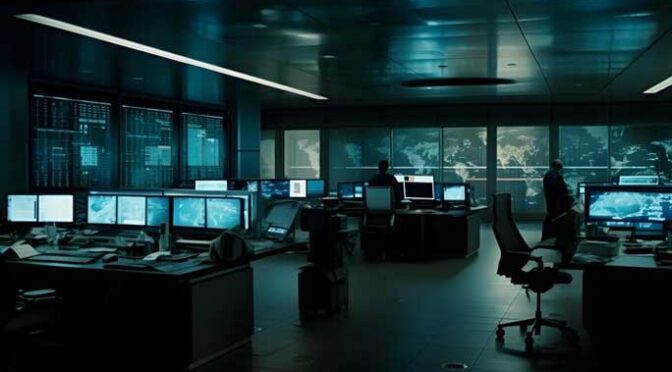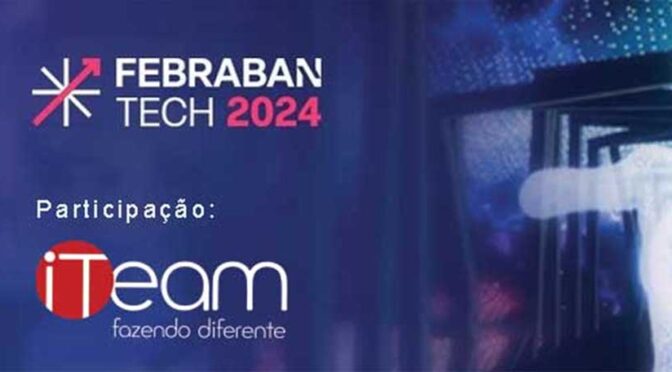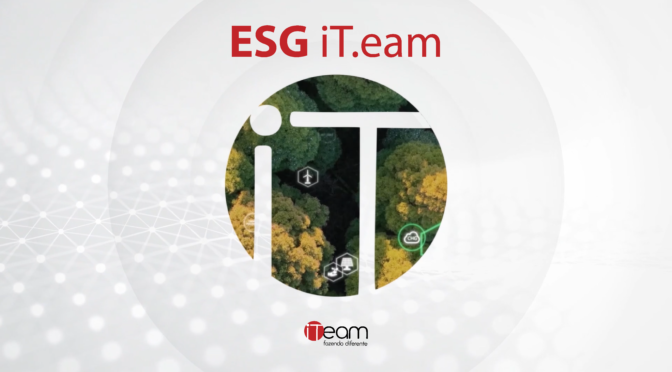1. introduction
One of the main objectives of information security management is to learn about the main types of cyber-attacks and how to prevent them. In this way, it is possible to develop strategies for adequate prevention so as not to harm the company internally or externally.
With the technological evolution resulting from the digital transformation of organizations, cybercrime is also on the rise - becoming increasingly sophisticated. In this sense, some security practices are essential to avoid this type of problem.
With this in mind, we've put together a list of tips and information to help you protect yourself against cyber attacks in 2023 and beyond. Check it out.
2. The main cyber attacks
Knowing the main approaches used by cybercriminals is the first step towards developing an effective protection strategy for your institution. See which illegal resources are used to undermine the functioning of organizations.
2.1 Backdoor
It's a variation of the Trojan horse that gives the attacker access to the infected system via a remote intrusion. In this way, the hacker is able to alter and delete documents, run programs, install malicious applications and send mass emails on behalf of the company.
The backdoor was developed precisely to access loopholes in management and network systems. In general, it is installed and integrated by the app developer and is not always dangerous, as it is initially used for updating and maintenance purposes. However, it can leave data security vulnerable by allowing criminals to break into the system.
2.2 Phishing
Phishing is a criminal approach along the lines of digital social engineering that abuses users' trust in order to steal their data. The hacker poses as a legitimate brand in order to deceive the victim. This can happen in a variety of ways, whether it's through links in fake emails or conversations in instant messengers or SMS.
The aim is always the same: to steal sensitive data. For example, you may receive a message supposedly from your bank, asking you to click on a suspicious link or enter confidential information. Your records are then stolen.
2.3 URL manipulation
The URL manipulation attack is carried out by cybercriminals to allow the server to grant access to pages that they are not authorized to browse. All sites have areas restricted to accredited users.
In this sense, the hacker alters the URL to access the page and extract all the user data that would only be available after logging in with a personal, non-transferable password.
There is also the possibility of third parties making the corporate website handle an access using characters not thought of by the developer. In this way, the page emits an error protocol that could possibly propagate sensitive data.
2.4 DoS (Denial Of Service) attack
Also called a denial-of-service attack, it is a type of criminal approach in which an individual intends to make hardware unavailable to the user, shutting down the proper functioning of the device.
The DoS attack works by flooding or overloading a computer with requests until the traffic cannot be processed, denying the service to other accredited users. It is an approach characterized by the use of a single device to carry out the attack.
2.5. DDoS attack
As the DoS attack only involves a piece of hardware to trigger several packet requests to a server, it doesn't have the power to debilitate more robust computer networks. For this, there is a more advanced attack, DDoS (distributed denial of service attack).
This type of attack occurs when hackers break into the company's master computer. This central machine then forces other devices to access the same server simultaneously. The result is that the entire server is overloaded so that it remains unusable for longer.
2.6 DMA (Direct Memory Access) attack
The DMA Attack allows direct access to the device's RAM memory, without going through the CPU in order to speed up the computer's transfer and processing levels.
This approach is used by hackers to access RAM records without the need for specific software.
2.7 Eavesdropping
Eavesdropping means "snooping". In eavesdropping, the hacker violates the victim's confidentiality through email systems, instant messaging, telephony and internet resources. In this way, they gain access to data and use it to their advantage.
A detail of this type of approach is that the victim's information is not altered, the hacker "only" looks at the records to apply subsequent scams.
3. The importance of Information Security (IS)
As there are various types of cyber attacks, it is necessary to define policies for accessing and using systems and data in order to protect the organization from end to end. In this sense, information security is essential to guarantee these benefits. Learn about the advantages that prove the importance of IS for your institution.
3.1 Reduces vulnerabilities
Strengthening data protection makes the company better prepared to deal with internal and external risks. The various vulnerabilities involved in collecting, processing and controlling information are foreseen and dealt with preventively when the organization invests in IS. This is because a culture of self-preservation is practiced, based on standards and contingency plans that speed up data recovery when an attack becomes a reality.
3.2 Prevents financial and image damage
Information Security is also a cost-effective strategy. Instead of acting only after problems occur, the IT team, in partnership with a company specializing in IS, can avoid wasting time and money.
Another very obvious condition is care for the brand's reputation. An institution that is vulnerable, that deals with unavailability in its operational flow or that suffers frequent attacks, generally has its credibility damaged in the market. Consumers, suppliers and investors lose confidence. Therefore, IS is essential to avoid this type of adversity.
3.3 Makes the enterprise more competitive
Effective Information Security practices can boost business competitiveness. After all, leveraging IS resources and policies benefits the performance of the IT team. It also shields daily activities and guarantees the integrity of data so that it can be converted into useful information for decisive actions.
In addition, preserving organizational information makes the business smarter. By having reliable data available at all times, sales and marketing teams, for example, can devise innovative strategies to improve customer acquisition and sell more.
3.4 Benefits the culture of continuous improvement
The effective protection of information also favors the creation of an IS culture. It is complete when employees at all hierarchical levels know the rules, are fully aware of the most obvious risks and work together to avoid them.
By implementing good IS practices, the company offers its professionals ways of dealing with problems without surprises. This not only makes it much easier for the IT team to operate, but also enables continuous improvements to be made in all areas of the operational flow.
3.5 Guarantees the company's future
Finally, companies that are looking to the long term also gain many advantages from Information Security management. After all, data will increasingly have a higher market value. And institutions that protect themselves against threats and strengthen their information access and management capabilities have a great chance of remaining relevant in the future.
4. The pillars of Information Security
The IS works essentially through its 5 pillars. Get to know each of them below:
- Confidentiality: exists to ensure that data is available to accredited users and protected from third parties. It is a fundamental element of privacy, which includes personal data, sensitive records, financial information, etc.
- Integrity: maintains the original characteristics of the data, since its conception. Therefore, it cannot be modified without formal authorization.
- Availability: for institutional systems and applications to be useful, data and documents must always be available. Availability is therefore a cornerstone of IS, which guarantees full-time access to company files and records.
- Authenticity: corresponds to authorization to access, share and receive information. Its basic tools are logins and passwords, but authentication tools can also be used to confirm the identity of users.
- Irretractability: guarantees that a user or organization has no way of disputing the authorship of the data provided, as in the case of using a digital certificate to sign agreements and online purchases. It is the ability to prove what has been done, making contradictions between the parties involved impossible.
This entire basis is indispensable for setting up your data use policies and developing cybercrime protection strategies.
5. How to protect yourself against cyber attacks
Cyber attacks can be prevented by taking specific action. Check out the steps below.
5.1 Develop an Information Security Program (ISP)
The Information Security Program (ISP) needs to be properly designed to protect your business. This way, you can create good guidelines to solve problems efficiently. Here are some essential requirements:
- determine priorities;
- describe how each occurrence will be handled;
- define access control rules;
- drawing up policies for the use of external networks and mobile devices.
5.2 Educate your employees
Anyone who thinks that data breaches only happen because of flaws in computer tools is mistaken. In fact, many occurrences are triggered by human error due to a lack of instructions on cybersecurity.
To avoid such occurrences, it's worth investing in educating teams through campaigns and refresher courses, covering theoretical and practical issues about digital risks, their consequences and how to act in the event of problems.
Another interesting practice is to draw up policies on the use of mobile devices for corporate tasks and access to systems, as well as good conduct to improve the protection of communication channels.
5.3 Rely on the right partners and tools
Some companies are not ready to deal with effective protection against cyber attacks because of their low digital maturity. In this sense, the most strategic and productive solution is to seek a partnership with expertise and cutting-edge resources to protect your institution. By the way, it's no wonder that IT outsourcing is on the rise.
Enlisting the help of an experienced brand to identify and deal with vulnerabilities is the best way to avoid major problems. Also, be sure to invest in quality systems and tools that are already recognized in the market.
5.4 Keep your software up to date
Cybercriminals are becoming more and more sophisticated and virtual intrusions are having ever greater consequences. In this sense, it's important to always keep your software up to date with the latest version. This ensures that your programs are always optimized and free of vulnerabilities.
In addition, updates are essential for the implementation of new security patches, enabling systems to detect and combat new threats.
5.5 Make regular file backups
With data at the heart of organizational activities, an attack can bring down the entire operation of the business. To avoid this problem, you need to back up your files.
The recommendation is to draw up an automated backup schedule. This way, your team can continue working while autonomous resources save the information in a secure area.
5.6 Protect your networks and databases
Through VPN resources you create a secure virtual environment for your networks and databases, even when accessing corporate software from a home network.
This tool is indispensable when the organization has professionals who work remotely and sensitive information is shared frequently. In this private area, the likelihood of experiencing a cyber attack is reduced, also benefiting the performance of the IT team itself.
6. Conclusion
As we have seen, achieving a high level of cybersecurity is quite a mission. Risks are everywhere and demand a systemic vision from managers and their teams. In this sense, knowing how to protect yourself from cyber attacks for this year and beyond needs to be among the business's priorities. After all, prevention is always the best strategy.
These tips and recommendations are fundamental to improving Information Security in your sector or business. But there is the possibility of strengthening all this conduct in order to raise the quality and effectiveness of your activities to a higher level.
One suggestion is to enlist the help of a specialized brand. A good provider can assess your company's current data protection scenario, make diagnoses and draw up an efficient and scalable prevention strategy.
Leave a comment
See also:
iT.eam Copyright 2024 - Todos os direitos reservados.
Acesse nossa Política de Segurança da Informação. | Acesse nossa Política de Privacidade da Informação. | Acesse nossa Política Antissuborno e Anticorrupção. | Canal de Ética







